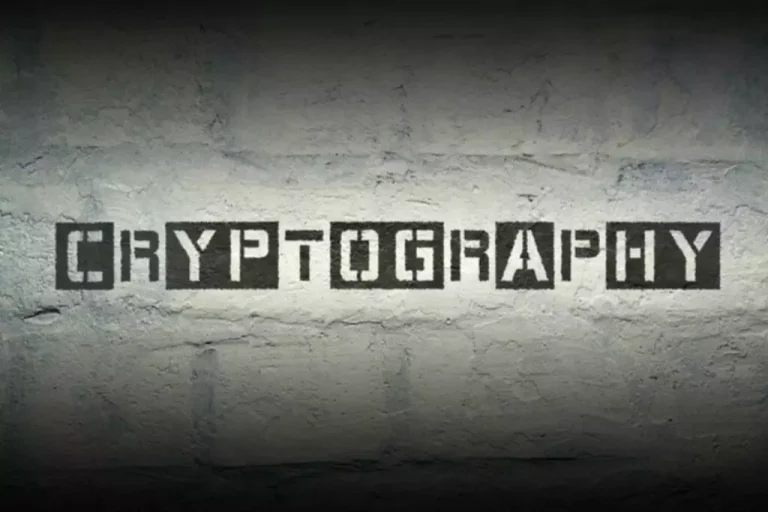Understanding Blockchain Bridges and Crypto Cross-chain
Content
A simple way to understand the need for cross-chain bridges is to imagine blockchains as different continents with vast oceans between them. Continent A has extensive natural resources, Continent B has fertile land on which to grow food, and Continent C has a https://www.xcritical.com/ booming manufacturing industry and an abundance of skilled artisans. Cross-chain bridges do not transfer your Bitcoin from the Bitcoin blockchain to the Ethereum blockchain. Instead, the bridge will generate tokens equivalent to your BTC but can be used on the Ethereum blockchain. Smart contracts are designed to keep track of everything you send and receive. Now that we’ve explored the concepts of crypto bridges and onramps, you’re probably wondering how you can get started using them.
Blockchain Bridges: A Deep Dive into Cross-Chain Interoperability
As an up-and-coming brokerage platform, you must meet this high standard of diversity, high-speed execution What is a Liquidity Bridge and efficiency. To achieve this goal, you must select the right liquidity bridge provider that meets your distinct needs. Issuance of tokens on multiple chains has no linkage on the technical level, but has to be approved through official channel or human consensus.

Atomic Swap Bridge Development for REMME Chain
Chainalysis offers unmatched data coverage, spanning more than 25 blockchains, 17 million assets, and 220 million bridge transactions. Investigators can trace through even the most intricate financial trails, uncovering where funds Mining pool originated, where they’re headed, and every connection along the way. Liquidity bridges have become the industry standard for both retail and institutional Forex Brokers.
Introduction to Liquidity Bridges
My dedication to advancing technology and my ability to lead and inspire people help our clients achieve their ambitious goals. My work continues to push the boundaries of what’s possible, setting new standards for innovation and security in the industry. Users are also responsible for their funds because there is no centralized system to do that for them.
- Moreover, supporting and funding innovative research initiatives focused on novel trustless protocols and cryptographic mechanisms can pave the way for a more secure future of interoperability.
- This ensures liquidity and seamless transfers across different networks.
- Bitcoin, for example, prioritizes security and storage of value, while Ethereum is a hub for decentralized applications and smart contracts.
- Cross-chain bridges are protocols that allow tokens and data to move between different blockchain networks.
- Trusted bridges, while relying on a central authority, often have robust security measures in place.
- Typically, the further along the spectrum a cross-chain solution moves toward trust-minimization, the more computationally expensive, less flexible, and less generalizable it becomes.
Fueling Your Forex Brokerage Success: The Transformative Influence of a Trusted Forex Liquidity Provider
For those prioritizing ease of use and speed, trusted bridges may be suitable. But for those seeking ultimate control and decentralization, trustless bridges offer a powerful alternative. Ultimately, understanding the diverse forms of blockchain bridges empowers users to navigate the interoperable future with confidence, maximizing the potential of their crypto assets. Blockchain bridges play a crucial role in expanding the overall capacity of the decentralized ecosystem. Bridges operate as bypasses, efficiently distributing transaction load across multiple chains.
For example, a bridge makes it very easy to offer one group of clients fixed spreads while providing variable spreads to a different client base within the same trading ecosystem. In addition, further customization such as a commission only VIP groups can then be made depending on the broker’s specific tastes. At Blaize, we understand that the world of blockchain is as diverse as it is complex, especially when it comes to the critical domain of blockchain bridges. Our expertise in this field ranges from conducting comprehensive security audits of existing bridges to developing custom-designed bridges tailored to our clients’ specific needs and requirements. This section delves into the critical security considerations for blockchain bridges, exploring the intricate strategies and unwavering vigilance required to safeguard the very foundations of interoperable finance. By understanding the potential vulnerabilities and the essential safeguards, we can collectively strive towards a future, fostering innovation in finances.
Contracts on each side of the bridge ensure that the transfer takes place securely. Additionally, on the side chain, another contract allows the minting of the asset on the new network (adhering to the protocols and governance models). By contrast, the smart contract on the main chain only locks up your asset. Therefore, when users want to use the bridge, their assets are first locked on the cross-chain bridge smart contract, which triggers a signal to the side chain to start minting the locked asset through the smart contract.

Remember, while bridges offer distinct advantages, they may involve slightly higher fees compared to centralized exchanges. Additionally, their value shines brightest when seeking opportunities for the same asset across different networks. By choosing the right bridge and understanding its specific fees and functionalities, you can effectively navigate the interoperable landscape and maximize your blockchain experience.

Furthermore, it plays a significant role as it allows the users and the projects themselves to move liquidity from one chain to another. Cross-chain volume becomes an important growth indicator for the token to remain successful. Therefore, cross-chain market-making becomes essential for token projects to sustain liquidity on different chains and exchanges. While the principles don’t change, the terminology and process are slightly different. You have the ‘main chain’ (where you initially hold your assets) and the ‘side chain’ (where you wish to send your assets).
Consequently, this accessibility will unlock new financial opportunities and services and also promote the democratization of finance. This bridge connects the Ethereum blockchain to the Polygon (formerly Matic) network. Polygon offers faster transactions and lower fees compared to Ethereum.
Therefore, technically, any blockchain could be a layer 2 to any other chain but would only provide utility if it enhanced the user experience through faster and cheaper transactions. With assets now free to roam across chains, discrepancies in prices and conditions become ripe territory for exploitation. He meticulously scans liquidity pools across various chains through bridges, spotting a juicy opportunity. Ethereum yields a measly 5% on his stablecoin, while Fantom beckons with a tempting 12%. With a simple move, Bob bridges his stablecoin over, maximizes his returns, and bridges it back, pocketing the handsome interest differential.
BBO simply means the price feed consists of the most competitive offer from all providers working with the broker. Because multiple providers are competing to offer the best pricing possible to the broker, it results in a better trading experience for the end user. A blockchain bridge operates by either using a Wrapped Asset Method or a Liquidity Pool Method.
What is the difference between an on-chain swap and a cross-chain swap? An on-chain swap involves converting cryptocurrencies within the same blockchain network, where both the sending and receiving tokens are on this network. In contrast, a cross-chain swap involves converting assets across different blockchain networks, where the token you send is on one network, and the token you receive is on another. In the cryptocurrency context, Chain A could be Ethereum and Chain B Solana, with Assets A and B being Eth and Sol respectively. To facilitate this trade, Alice or Bob would use a bridge, such as Portal (formerly Wormhole), to transfer their asset to the opposite chain to execute the swap, and possibly revert it post-trade.
At their core, these bridges employ a messaging system that permits blockchains to pass information to each other in a verifiable way. Instead of relying on a centralized intermediary, trustless bridges use automated software on each blockchain to exchange and verify messages independently. This approach ensures that data and assets can move seamlessly across disparate networks, upholding the security and transparency that define blockchain technology. They enable interoperability thereby allowing different blockchains to interact with each other. This interaction is vital for the growth of decentralized finance (DeFi). You can also trade assets across different exchanges without converting them to fiat.
For example, if you transfer Ether (ETH) from Ethereum to BSC, the bridge ensures that the BSC token mirrors the value of the locked ETH. The arbitrage is simply moving asset cross-chain with a timed withdraw. Assets that are mainstream and have issued separate tokens on different chains. Fundamentally the tokens are not linked, but token issuers officially give credibility to the token. Supporting businesses and individuals with efficient payment solutions, helping them achieve economic prosperity through borderless finance and fostering growth globally. See how cross-chain solutions enable a new frontier of dApp functionality.

Leave a Reply
Want to join the discussion?Feel free to contribute!